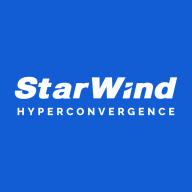


NetApp FAS Series and StarWind Storage Appliance compete in the storage solutions sector. StarWind has the upper hand in affordability and quality support, whereas NetApp FAS is favored for its extensive features and high performance.
Features: NetApp FAS Series offers diverse functionalities with deduplication, high availability, and unified protocol support, enhancing its capabilities. It excels in performance with snapshot technology and FlashCache. StarWind focuses on affordability with features like performance-enhanced all-flash arrays, iSCSI support, and ease of management, catering to simplified setups.
Room for Improvement: NetApp FAS Series can improve its monitoring tools and documentation and address cost concerns while enhancing integration options with backup vendors and licensing transparency. StarWind users report a need for improved initial synchronization and dashboard features, often missing from the free version.
Ease of Deployment and Customer Service: Both solutions mainly deploy on-premises, with NetApp also supporting hybrid cloud environments. NetApp's support is generally considered responsive and knowledgeable despite some mixed support tier reviews. StarWind's support is praised for its reliability, particularly in on-premises settings.
Pricing and ROI: NetApp FAS Series is seen as pricey, with a licensing structure enabling users to pay for only necessary features, delivering a positive ROI in VMware environments despite initial costs. StarWind is valued for its competitive pricing and simple licensing parameters, making it a preferred choice for budget-conscious buyers.



Pure Storage FlashArray//X is the world’s first enterprise-class, all-NVMe flash storage array. It represents a new class of storage – shared accelerated storage, which is a term coined by Gartner – that delivers major breakthroughs in performance, simplicity, and consolidation.
NetApp FAS series is an enterprise-level storage system that provides a wide variety of data management services, including data protection, block and file storage, and data management.
NetApp FAS is designed to be highly scalable, allowing your organization to grow storage capacity on demand. NetApp FAS also supports multiple protocols, including NFS, SMB, iSCSI, and Fibre Channel, as well as various storage architectures, including SAN (Storage Area Network) and NAS (Network-Attached Storage).
The FAS series has multiple data protection and data management features, including snapshots, cloning, replication, and deduplication, to help secure your data and manage it more efficiently. The system integrates with other NetApp products and solutions, to create a unified data management platform. The system can be deployed on-premise, on multi-cloud environments, or hybrid.
NetApp FAS Series Benefits and Features
NetApp FAS series provides its users with several key benefits and features, including:
Reviews from Real Users
NetApp FAS Series stands out among its competitors for a number of reasons. Several major ones are its speed, reliability, and a wide variety of features.
Adriano S., IT project and infrastructure service manager, writes, “The replication feature is noteworthy because it's faster than most and it uses little bandwidth. Then there's the friendly interface that the equipment offers. With this interface, it is very easy to manage.”
Temitope O., a NetApp product manager at Hiperdist Ltd, says, “I like the unified management feature because sometimes you end up running a single protocol on the entire system. You rather have a system for a particular protocol and another system for other protocols, especially in a big environment like mine.”
For SMB and Enterprises who are looking for high performance primary storage for server virtualization, VDI, database and Big Data scenarios, or inexpensive secondary backup tier, our solution is StarWind Storage Appliance. It unifies commodity servers, disks and flash, and associated software into an easily scalable storage platform.
Additionally, the appliance features an optional gateway to Azure public cloud, which helps to implement an effective Disaster Recovery plan or meet regulatory requirements. StarWind SA scales up by adding individual disks and flash modules, or JBODs, while adding ready controller nodes allows scaling out.
StarWind SA targets those, who need high-performance primary storage or secondary storage for backup. In case there is a whole virtualization infrastructure to build from scratch, StarWind HCA will come in handy. Otherwise, if all the required hardware is present, StarWind Virtual SAN will be enough to build a high-performance virtualization setup.
We monitor all NAS reviews to prevent fraudulent reviews and keep review quality high. We do not post reviews by company employees or direct competitors. We validate each review for authenticity via cross-reference with LinkedIn, and personal follow-up with the reviewer when necessary.